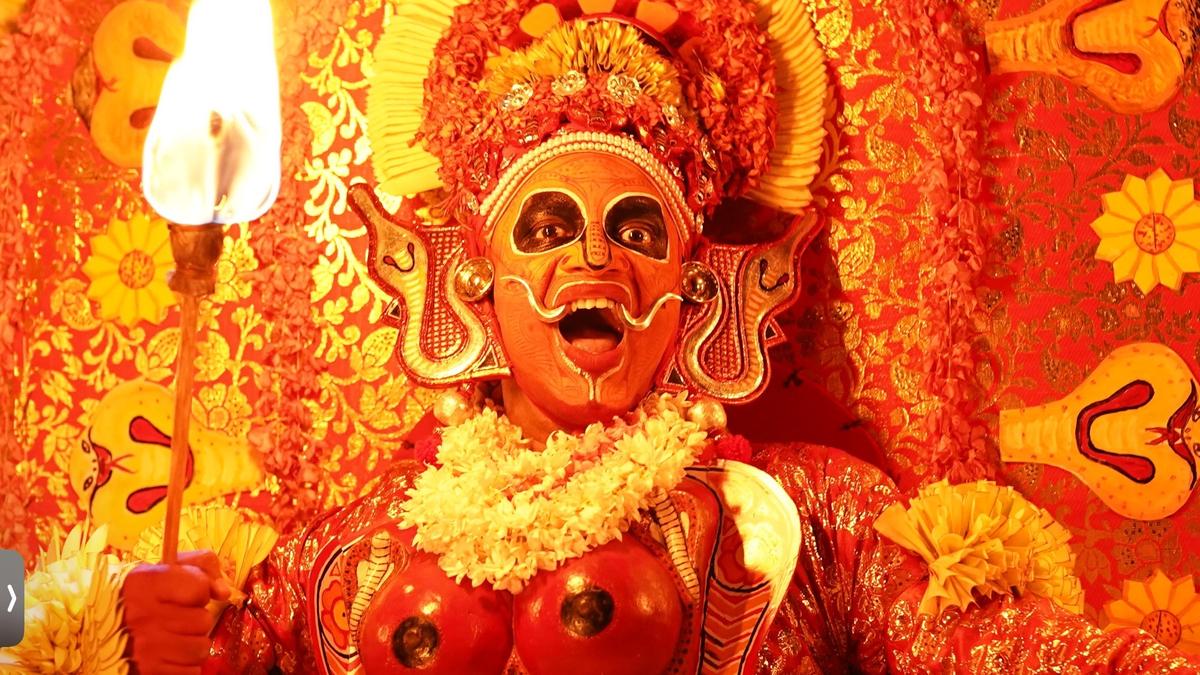
Malayalam movie ‘Vadakkan’ explores the paranormal rooted in Kerala
The Hindu
Vadakkan, a paranormal thriller rooted in Kerala, uses theyyam as a storytelling tool
Sajeed A’s feature film debut Vadakkan, a paranormal thriller, references a painting, Landscape with Charon Crossing the Styx by Flemish Northern Renaissance artist Joachim Patinir. Attributed to have been painted in the first quarter of the 16th century, it depicts, a soul’s journey to afterlife — heaven or hell. Vadakkan culminates in a similar journey that the lead character, paranormal investigator Raman Perumalayan’s soul undertakes. It is the kind of film that one has to pay close attention to because it is not a simple horror film with typical thrills, chills and sound effects. Which, by the way, there is plenty of in the film.
The cliches are absent — no white sari-clad woman ‘ghost’, Satan or devil. The story is rooted in Kerala, set in a relatable milieu. The ‘demonic’ or malevolent presence is the spirit of a theyyam performer, Kunjambu, who was wrongfully killed a few centuries ago. With theyyam’s ties to spirit or ancestor worship, we are left wondering if Raman is a descendant of Kunjambu.
“The Indian audience is used to horror films that derive from the Abrahamic tradition where Satan or the devil is the source of evil. We have rooted Vadakkan in Kerala, connected to the Malayali,” says Sajeed His fascination for all things ancient, especially theyyam led to using the ritualistic form as a storytelling tool or rather, what he calls, the backbone of the film.
The action pivots on a series of murders on the sets of a reality show and Helsinki-based Raman, essayed by Kannada actor Kishore, who comes to the fictional island Brahamgiri. The premise might seem predictable but the twist is the treatment and how the plot unfolds. The story is not the simple haunting-and-killing kind. A few horror movie tropes — found footage, the players splitting up, jump scares — have been used effectively, and are not overdone.
Picking the theme and the milieu, Sajeed reveals, was deliberate. He says how horror or paranormal films are also a reflection of a society’s or people’s preoccupations and trauma.
“For instance a number of Korean horror films are set in schools because of the authoritarianism in education and what it does to people. Similarly, this film explores the theme of decaying social fabric,” he says. The politics of caste comes into the narrative. Most theyyam performers belong to marginalised communities and tribes.
Raman belonging to a ‘low’ caste was a hindrance in his relationship with his childhood sweetheart, Megha Nambiar (Shruti Menon) — a reality that plays out everyday in India where ‘honour killings’ are not shocking anymore.

 Run 3 Space | Play Space Running Game
Run 3 Space | Play Space Running Game Traffic Jam 3D | Online Racing Game
Traffic Jam 3D | Online Racing Game Duck Hunt | Play Old Classic Game
Duck Hunt | Play Old Classic Game











